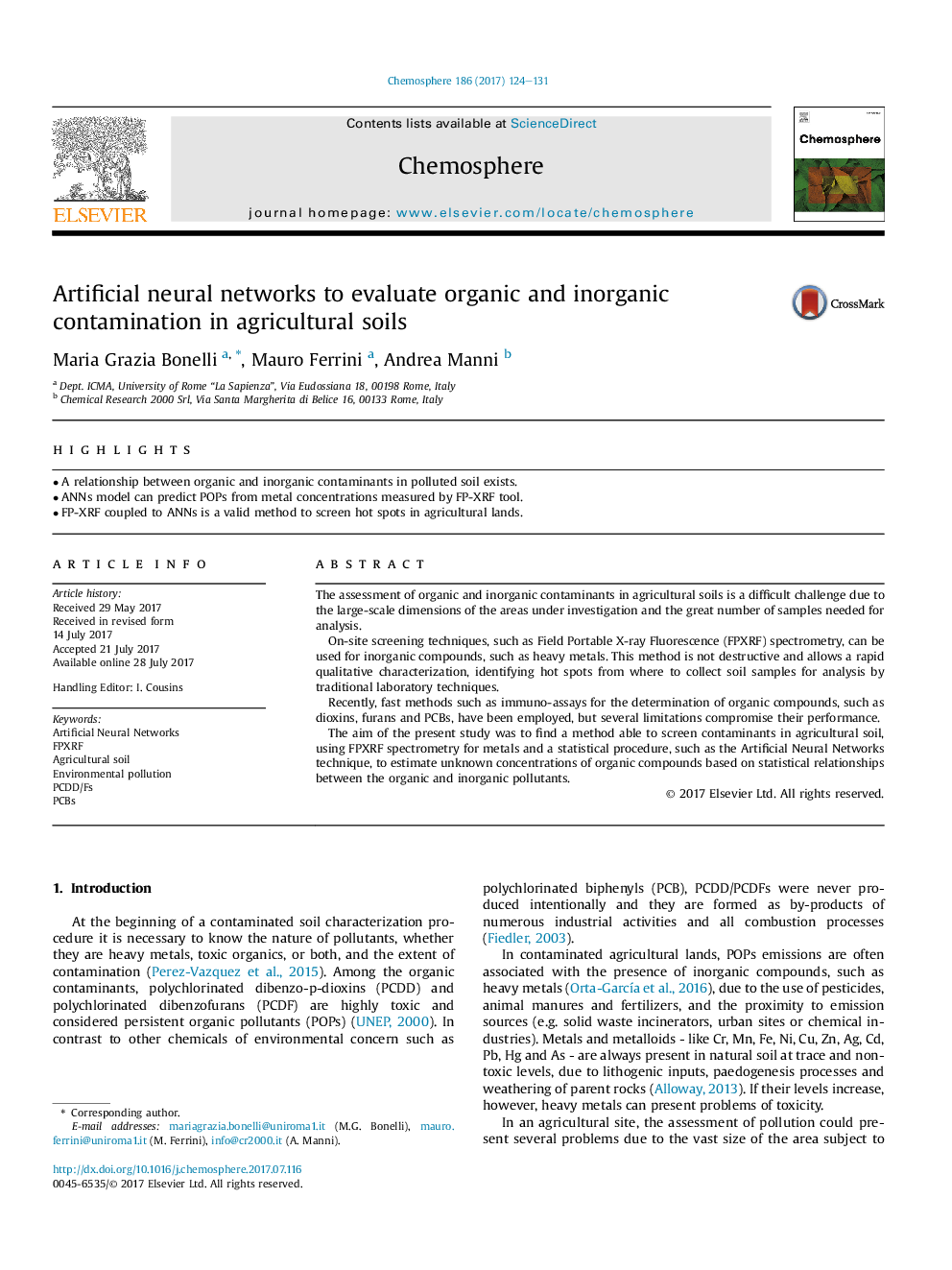| کد مقاله | کد نشریه | سال انتشار | مقاله انگلیسی | نسخه تمام متن |
|---|---|---|---|---|
| 5746012 | 1618785 | 2017 | 8 صفحه PDF | دانلود رایگان |
- A relationship between organic and inorganic contaminants in polluted soil exists.
- ANNs model can predict POPs from metal concentrations measured by FP-XRF tool.
- FP-XRF coupled to ANNs is a valid method to screen hot spots in agricultural lands.
The assessment of organic and inorganic contaminants in agricultural soils is a difficult challenge due to the large-scale dimensions of the areas under investigation and the great number of samples needed for analysis.On-site screening techniques, such as Field Portable X-ray Fluorescence (FPXRF) spectrometry, can be used for inorganic compounds, such as heavy metals. This method is not destructive and allows a rapid qualitative characterization, identifying hot spots from where to collect soil samples for analysis by traditional laboratory techniques.Recently, fast methods such as immuno-assays for the determination of organic compounds, such as dioxins, furans and PCBs, have been employed, but several limitations compromise their performance.The aim of the present study was to find a method able to screen contaminants in agricultural soil, using FPXRF spectrometry for metals and a statistical procedure, such as the Artificial Neural Networks technique, to estimate unknown concentrations of organic compounds based on statistical relationships between the organic and inorganic pollutants.
Journal: Chemosphere - Volume 186, November 2017, Pages 124-131
